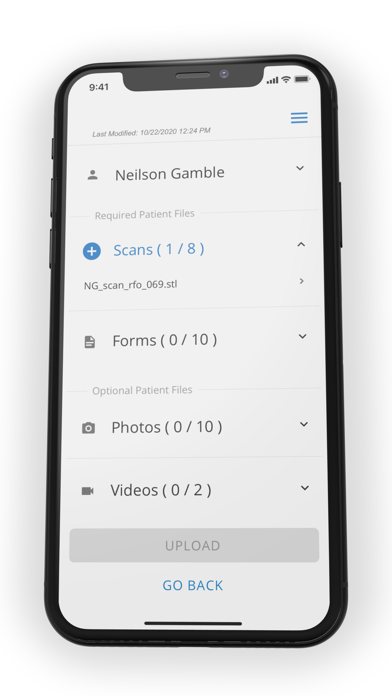Foot ID
com.kevin.footid
View detailed information for Foot ID — ratings, download counts, screenshots, pricing and developer details. See integrated SDKs and related technical data.
Total installs
1,000+
Rating
4.6(12 reviews)
Released
August 11, 2020
Last updated
February 13, 2025
Category
Medical
Developer
Foot in Motion
Developer details
Name
Foot in Motion
E-mail
unknown
Website
https://www.kevinrootmedical.com/
Country
unknown
Address
unknown
Screenshots




Description
Foot ID uses your iPhone's system of sensors, cameras, and a dot projector to create a detailed 3D scan of your patient's foot & ankle and order custom orthoses with incredible accuracy and speed. Automatically upload your patient's 3D scans, manage and upload photos and videos of your patient and submit orders to KevinRoot Medical.
The TrueDepth camera system will detect your patient's foot and lower extremity with a flood illuminator. An infrared camera will then take an image, and a dot projector will project out over 30,000 invisible infrared dots. This system uses the infrared image and the infrared dots, and pushes them through neural networks to create a mathematical model of your patient's foot and lower extremity.
FootID app will push your patient's data and 3D scans directly to KevinRoot Medical via secure and HIPAA compliant transmission. With the largest selection of clinical solutions for your patients including orthoses, AFOs, Richie Braces, shoes with rapid turn around, Root Lab Technology, highest quality CAD CAM your patients will receive extraordinary outcomes. A full portfolio of clinical products for your patient are online at www.kevinrootmedical.com
More on how the 3D system works:
A Vertical Cavity Surface Emitting Laser (VCSEL) time of flight sensor initiates the process, measuring the distance from phone to foot and lower leg to determine exposure times for the other sensors. As you wave the phone over your patient, the foot and leg is flooded with infrared light before a separate array is used to project a dot matrix onto the foot and leg and a combination of infrared and visible imaging system sensors then maps out the dots to create a true and accurate 3D scan.